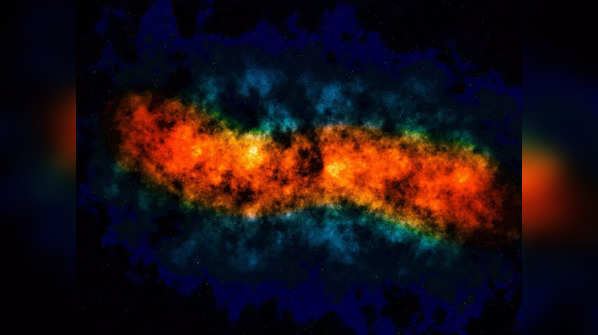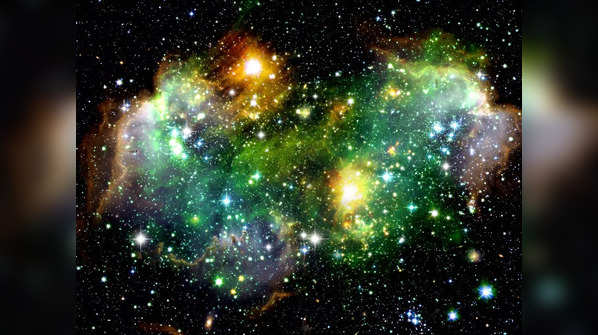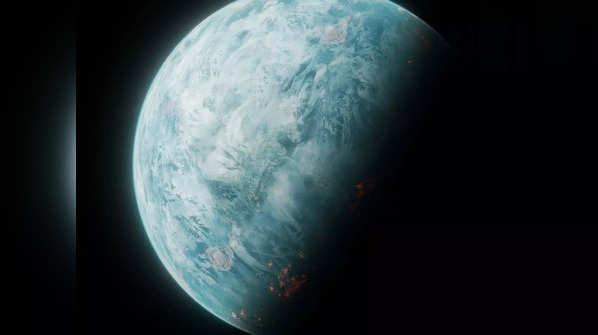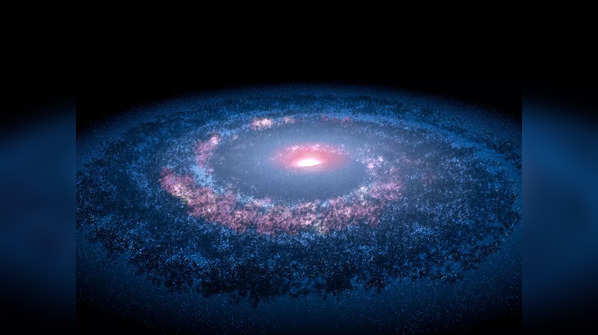Welcome To Latest IND >> Fastest World News
TOI Lifestyle Desk
/ etimes.in / 23 Jul 2024, 06:00:00 PM
AA
Text Size
- Small
- Medium
- Large

1/9
The mysteries of space
Space has always fascinated humanity, prompting countless questions about the universe. From the mysteries of black holes to the search for extraterrestrial life, our quest for knowledge continues to push the boundaries of science and technology. This article explores eight of the most compelling questions about space, providing detailed answers based on the latest scientific discoveries and theories.
Image: Canva

2/9
How did the universe begin?
The most popular theory to explain how the cosmos came into being is the Big Bang Theory. It implies that 13.8 billion years ago, the cosmos started as a singularity. In a hot, dense state, this singularity rapidly expanded, resulting in the development of matter and the universe as we know it. Georges Lemaître first put forth the notion in 1927, and Edwin Hubble’s 1929 discovery of the expanding cosmos later confirmed it. Arno Penzias and Robert Wilson’s 1965 discovery of the Cosmic Microwave Background radiation offers compelling support for the Big Bang theory.
Image: Canva

3/9
Are we alone in the universe?
The search for extraterrestrial life is one of the most exciting fields in astronomy. The Drake Equation, formulated by Frank Drake in 1961, estimates the number of civilizations in our galaxy. Projects like SETI (Search for Extraterrestrial Intelligence) use radio telescopes to listen for signals from alien civilizations. In 1977, the Wow! signal, a strong narrowband radio signal, was detected but never repeated. The discovery of exoplanets, such as those in the habitable zone of the TRAPPIST-1 system, increases the possibility of finding life beyond Earth.
Image: Canva

4/9
What is dark matter?
Dark matter is a mysterious substance that makes up about 27% of the universe. It does not emit, absorb, or reflect light, making it invisible and detectable only through its gravitational effects. The concept was first proposed by Fritz Zwicky in 1933 to explain the missing mass in galaxy clusters. Vera Rubin’s observations of galaxy rotation curves in the 1970s provided further evidence. Dark matter is thought to be composed of non-baryonic particles, such as WIMPs (Weakly Interacting Massive Particles), but its exact nature remains unknown.
Image: Canva

5/9
What is the Great Attractor?
The Great Attractor is a gravitational anomaly located in the Laniakea Supercluster, about 150-250 million light-years away from Earth. It exerts a significant gravitational pull on our galaxy and others in the vicinity. Discovered in the 1970s through the study of galaxy motions, the Great Attractor’s exact nature remains a mystery due to its location behind the Milky Way’s plane, obscured by dust and stars. Some theories suggest it could be a massive cluster of galaxies or a supermassive black hole. The study of the Great Attractor helps astronomers understand large-scale structures in the universe and the forces shaping them.
Image: Canva

6/9
What is dark energy?
The universe is expanding faster than ever thanks to a mysterious element called dark energy. It makes up about 68% of the universe. The concept was introduced to explain observations of distant supernovae in the late 1990s by teams led by Saul Perlmutter, Brian Schmidt, and Adam Riess. Dark energy is thought to be related to the cosmological constant, a term introduced by Albert Einstein in his equations of General Relativity. Its exact nature is still a major question in cosmology, with theories ranging from a property of space itself to new fields and particles.
Image: Canva

7/9
How do stars form and evolve?
Nebulae, or cosmic clouds of gas and dust, are where stars are formed. The process begins with the gravitational collapse of a region within the nebula, forming a protostar. As the protostar contracts, its temperature and pressure increase, eventually igniting nuclear fusion in its core. This marks the birth of a star. Stars spend most of their lives in the main sequence phase, fusing hydrogen into helium. Depending on their mass, stars can end their lives as white dwarfs, neutron stars, or black holes. The life cycle of stars was first detailed by scientists like Ejnar Hertzsprung and Henry Norris Russell.
Image: Canva

8/9
What are exoplanets?
Exoplanets are planets that orbit stars outside our solar system. The first confirmed exoplanet, 51 Pegasi b, was discovered in 1995 by Michel Mayor and Didier Queloz. Since then, thousands of exoplanets have been discovered using methods like the transit method and radial velocity. The Kepler Space Telescope, launched in 2009, has been instrumental in finding exoplanets, including those in the habitable zone where conditions might support life. The study of exoplanets helps us understand planetary formation and the potential for life beyond Earth.
Image: Canva

9/9
What is the fate of the universe?
The ultimate fate of the universe depends on its density and the properties of dark energy. Current observations suggest that the universe will continue to expand indefinitely. This scenario, known as the Big Freeze, predicts that galaxies will drift apart, stars will burn out, and the universe will become a cold, dark place. Another possibility is the Big Rip, where dark energy’s repulsive force increases, tearing galaxies, stars, and even atoms apart. The Big Crunch, where the universe’s expansion reverses and collapses into a singularity, is less likely based on current data.
Image: Canva
FOLLOW US ON SOCIAL MEDIA
Visual Stories
Photostories
Latest IND

